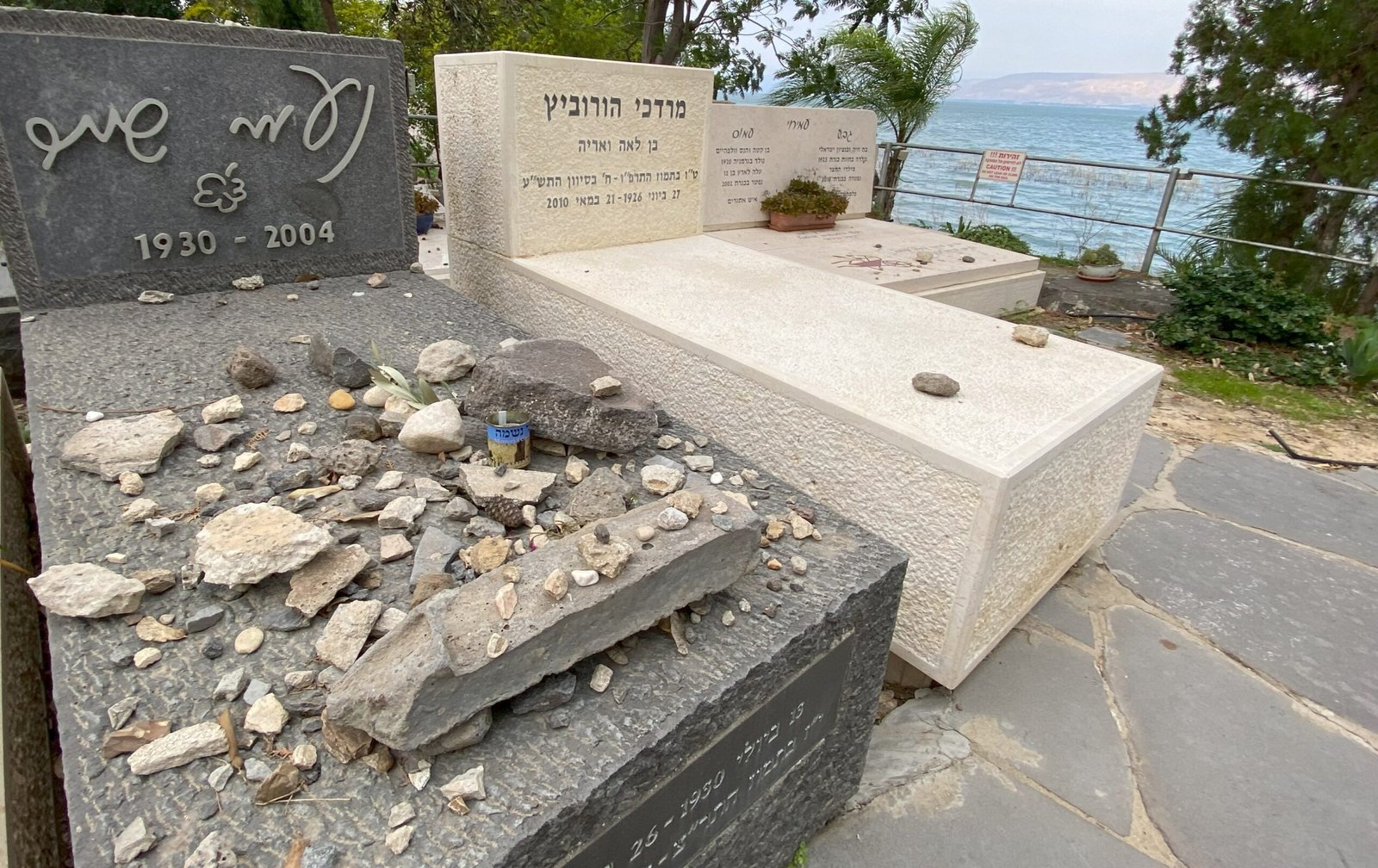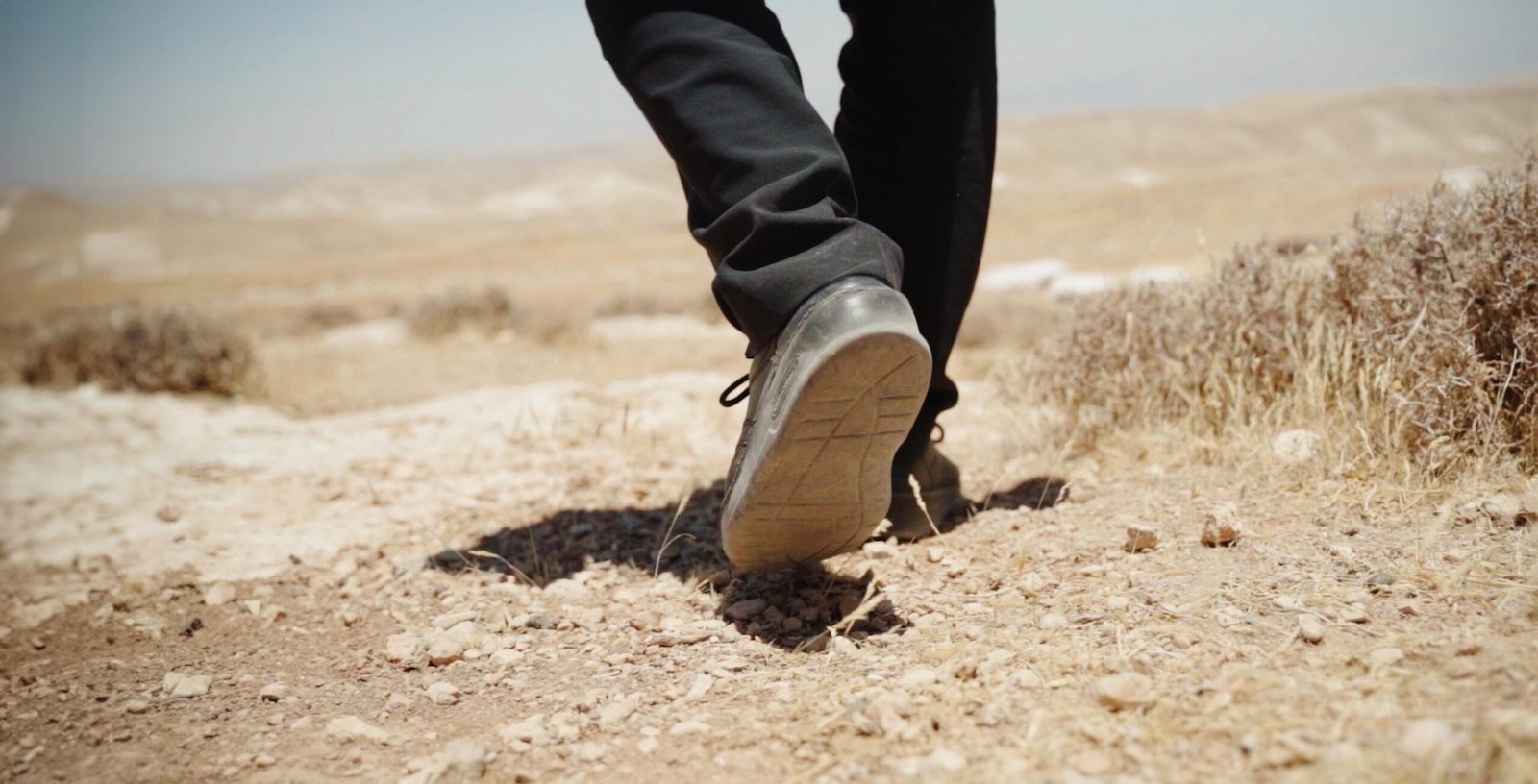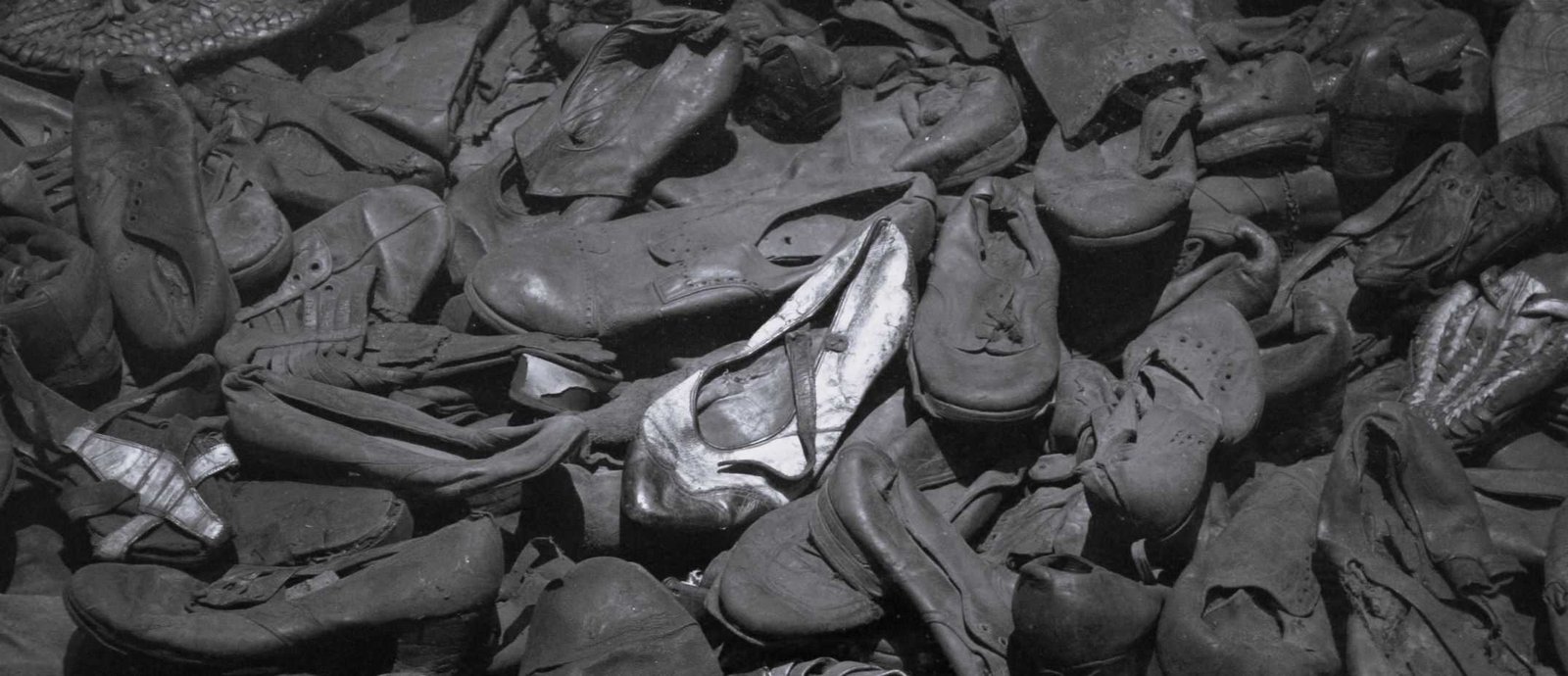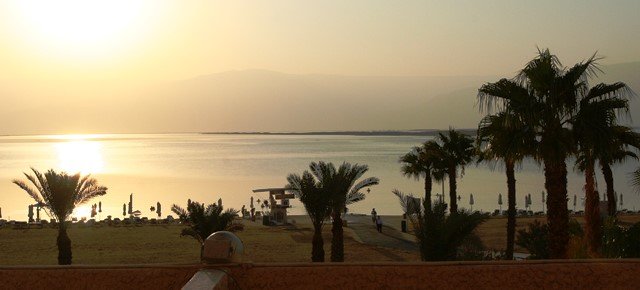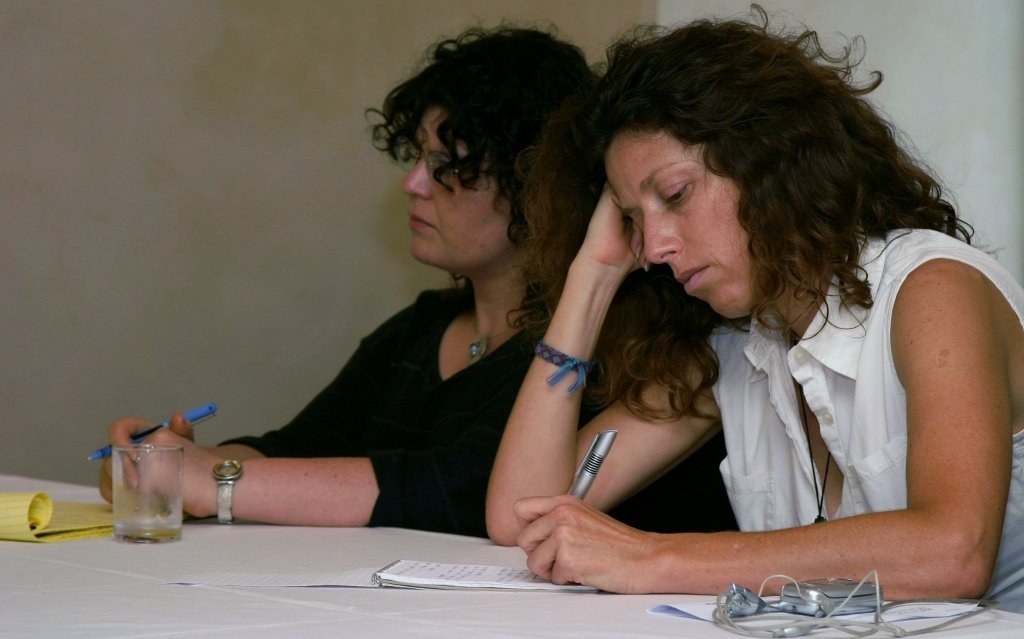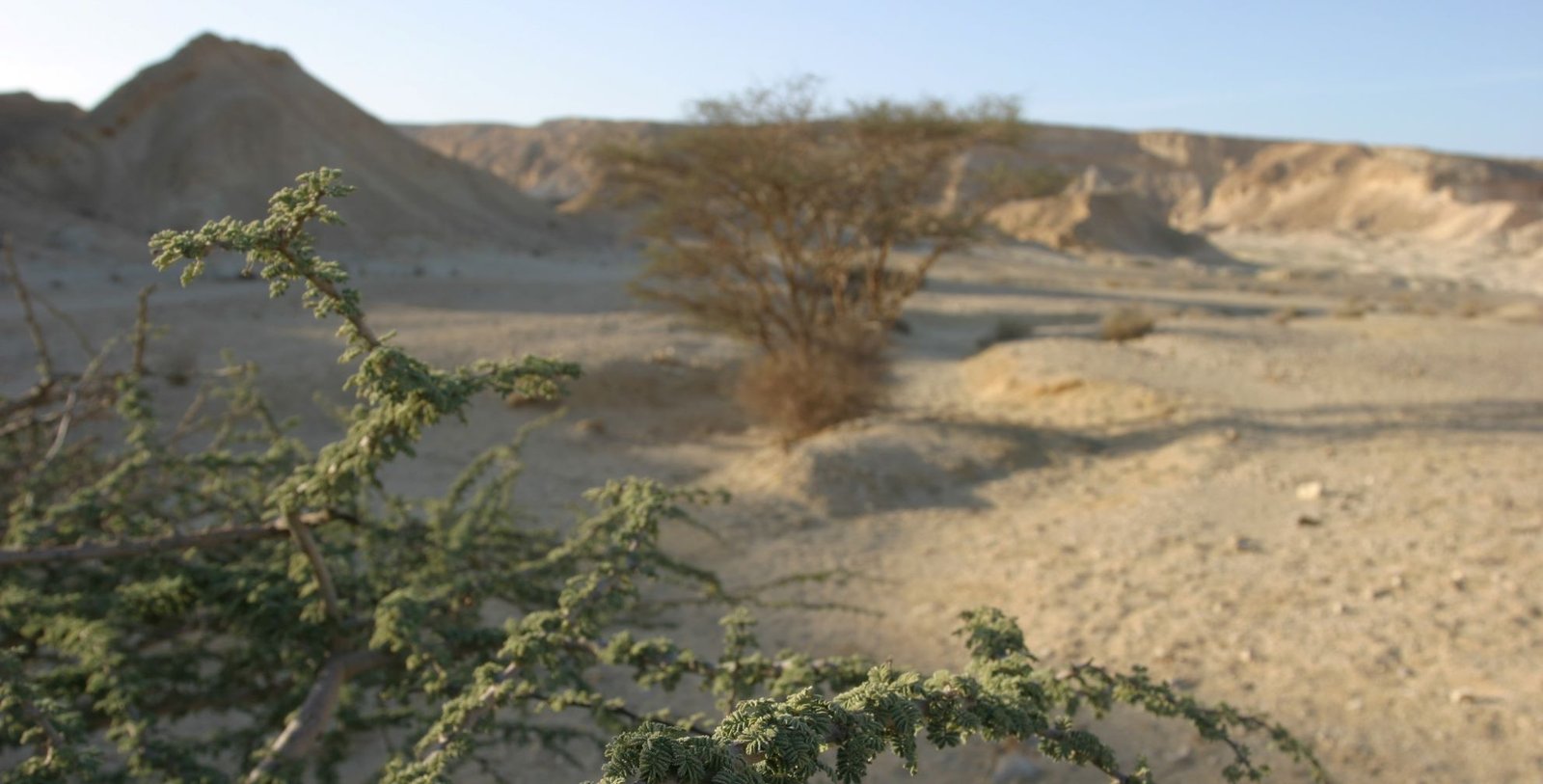Share This Story, Choose Your Platform!
Not by chance the New Testament begins with the statement “Βίβλος γενέσεως Ἰησοῦ Χριστοῦ/Biblos geneseos Yesou Christou,” which translates as “Book of the תֹולְדֹות/toledot of Jesus the Messiah” (Matthew 1:1). The Hebrew word תֹולְדֹות/toledot is a fundamental term in Holy Scripture.[1] Therefore, crucial aspects must be lost if we pass over this term, do not understand it correctly, or even translate it in a misleading way.
To get this right up front: Those who have so far understood this very first statement in the New Testament as a headline about the genealogy of Jesus, or perhaps even as a literary generic designation for Matthew 1:1-17, have quite certainly misunderstood it.
Scripture passages setting the course
Genesis 2:4 reports “אֵלֶּה תֹולְדֹות הַשָּׁמַיִם וְהָאָרֶץ בְּהִבָּרְאָם/eleh toledot hashamayim veha’aretz behibare’am.” The NIV renders: “This is the account of the heavens and the earth when they were created.” The highly regarded King James Version translates: “These are the generations of the heavens and the earth when they were created” – whereby it is not really evident what “the generations of heaven and earth” could be. The German Jewish scholars Martin Buber and Franz Rosenzweig[2] try it with: “These are the begettings [or: procreations] of heaven and earth: their being created.”
Leaving the term “תֹולְדֹות/toledot” untranslated for the time being, Genesis 2:4 literally states: “These are the תֹולְדֹות/toledot of the heavens and the land when they were created.”
In Genesis 5:1, the תֹולְדֹות/toledot of the heavens and the land are followed by the תֹולְדֹות/toledot of man: “זֶה סֵפֶר תֹּולְדֹת אָדָם/zeh sefer toledot Adam” – “This is the book of the תֹולְדֹות/toledot of Adam.”
The evangelist Matthew then obviously chose this unique formulation for the introduction of his Gospel, putting Jesus in the place of Adam.
The heading of Genesis 5:1 emphasizes the statement that man and woman were created together as the Adam in the likeness of God, and that the Creator blessed them and gave them the name “Adam,” “human being,” together.
This is followed by a birth sequence from Adam to the sons of Noah: Shem, Ham and Japheth – with strikingly accurate age data.
Based on these first two occurrences of the term תֹולְדֹות/toledot, Jewish tradition concludes that a single person must be as important as the entire work of creation. From which the famous phrase is inferred, “He who kills one man kills a whole world.”
Further, this leads to a discussion about the commandment, which according to Jesus is the highest (Mark 12:28-34) – where Shimon Ben Asai of the second generation of Tannaites (first third of the second century CE) disagreed with Rabbi Akiva, who had argued similarly to Jesus, saying that the תֹולְדֹות/toledot of Adam were even more important. After all, it is not only about the neighbor, Ben Asai reasoned, but about human beings in general. No matter whether Jew or Gentile: every human being is created equally in the image of God.[3]
The term תֹולְדֹות/toledot then appears for the third time in Genesis 6:9, where under the heading אֵלֶּה תֹּולְדֹת נֹחַ/eleh toledot Noach the so-called flood story is told.
This is followed by the תֹולְדֹות/toledot of the sons of Noah (Genesis 10:1), commonly referred to as the Table of Nations: A summary of the tribes, tribal associations, and peoples that spread across the earth after the Flood.
The תֹולְדֹות/toledot of Shem (Genesis 11:10) immediately follow the Tower of Babel and connect Shem to the sons of Terah: Abram, Nahor and Haran.
The תֹולְדֹות/toledot of Terah (Genesis 11:27) deal with Terah’s family, kinship connections, and their exodus from Ur in Chaldea heading for the land of Canaan. However, this endeavor ends in Haran, where Terah dies.
Thus, the entire story of Abraham is recorded under this heading, “וְאֵלֶּה תֹּולְדֹת תֶּרַח/ve’eleh toledot Terah,” because the next תֹולְדֹות/toledot do not show up until Genesis 25:12.
Thus, there are no “תֹולְדֹות/toledot of Abraham” in Scripture – which is remarkable in view of the extraordinarily significant role played by this man and his history of influence, which extends far beyond the New Testament up to our time.
Genesis 25:12 speaks of the תֹולְדֹות/toledot of Abraham’s son Ishmael, who was born of Hagar the Egyptian. His extended family eventually became a nation of twelve-tribes native to the desert regions south of the Promised Land.
A few verses later there is mention of “וְאֵלֶּה תֹּולְדֹת יִצְחָק בֶּן-אַבְרָהָם/ve’eleh toledot Yitzhak ben Avraham” (“these are the תֹולְדֹות/toledot of Isaac, the son of Abraham”) (Genesis 25:19)[4], which are a summary not of the history of Isaac, but of the events surrounding the twin-brothers Esau and Jacob.
Genesis 36 mentions the תֹולְדֹות/toledot of Esau, “that is of Edom” (verse 1), respectively, that “of the father of Edom in Mount Seir” (verse 9). Esau’s תֹולְדֹות/toledot are mentioned twice in quick succession, i.e., they are specially emphasized. This phenomenon is striking because it is unique.
This chapter traces the structure of Esau’s descendants, roots the extended family geographically in the southern East Bank, and outlines a tribal federation that is later repeatedly referred to as Edom.
Finally, the תֹולְדֹות/toledot of Jacob (Genesis 37:2), again, denote neither a genealogy nor a family tree. Nor do they begin with the birth of Jacob (Genesis 25:26), but with the birth of Jacob’s all-important son.
Jacob’s תֹולְדֹות/toledot tell the story of Joseph and his brothers, through whom, during the exile in Egypt, the foundation was laid for the eventual emergence of the nation of the Hebrews out of a loose association of an extended family, who had become slaves over time.
In Genesis 32:29 the name “Israel” appears for the first time when the progenitor Jacob had been told at the Jabbok river: “You shall no longer be called Jacob, but Israel.”
From the last occurrence of the term תֹולְדֹות/toledot in this first book of the Bible, it is indeed the case that these תֹולְדֹות/toledot converge on Israel.[5] In this respect, it is not far-fetched to find the purpose and meaning of all תֹולְדֹות/toledot in establishing the origins of the בני ישראל/bene Yisrael (“sons of Israel”).[6]
A structural marker
Rabbinic tradition holds that the Torah was not written in one go but had been “handed to Moses scroll by scroll” (תורה מגילה מגילה נתנה/torah megillah megillah nitnah).
The formula “אֵלֶּה תֹּולְדֹת/eleh toledot,” “these are the תֹולְדֹות/toledot,” occurs ten times in the book of Genesis. Each time a new section begins, so that each scroll, each “book” begins with this statement. “This also explains why some sections have introductory verses that recall or summarize facts mentioned in earlier sections.”[7]
Obviously, the expression תֹולְדֹות/toledot structures the so-called prehistory. It has the function of a structural marker in the narrative of the course from creation to the chosen people that the first book of Moses traces.[8]
Yael Ziegler concludes: “The final appearance of the phrase אֵלֶּה תֹּולְדֹת/ve’eileh toledot in the Book of Genesis relates to Jacob (Genesis 37:2). This indicates that the period of filtering is over. From this point forward, all of the descendants of Jacob are part of the chosen nation.”[9]
Summary or headline?
Even a cursory glance at Genesis 2:4 had shown that editors of the Bible, Bible translators and commentators do not agree whether the term אֵלֶּה תֹולְדֹות/eleh toledot, which occurs in Scripture only in the plural,[10] is a summary of what precedes or a heading of what follows.
In general, the Bible never speaks abstractly and theoretically of any תֹולְדֹות/toledot. At no point does the word stand alone, objectively, without reference in space, but is exclusively related – in status constructus or with a suffix[11] – to a person or group of persons – except in Genesis 2:4, where it is not about persons but about heaven and earth.
When asking about a function of the term as a heading, the first thing to note is that “אֵלֶּה/eleh” (“these”) at the beginning of a section “usually refers to what follows.”[12] It even seems possible to say in general that “אֵלֶּה תֹולְדֹות/eleh toledot” (“these are the toledot”) is “always a heading,”[13] as introductory words “always refer to what follows.”[14]
The only problem with such a general explanation of אֵלֶּה תֹולְדֹות/eleh toledot as a heading is caused by the occurrence of this expression in Genesis 2:4: “These are the תֹולְדֹות/toledot of the heavens and the earth.”
If we follow the ancient Jewish translation of the Old Testament, the Septuagint (LXX), saying “Αὕτη ἡ βίβλος γενέσεως/Haute he biblos geneseos” (“this is the book of Genesis”), we have to note that the text does not report anything further about the creation of heaven and earth after this heading – especially since the creation of heaven and earth in Genesis 2,1 had been declared expressis verbis as completed.
At not a single place do the תֹולְדֹות/toledot describe an origin, nowhere the pedigree or genealogy of the person mentioned in each case, but always the effects, the consequences of their existence. Likewise, “the תֹולְדֹות/toledot of the heavens and the earth do not describe the origin of the universe, but what happened to the heavens and the earth after their creation.”[15]
Samson Raphael Hirsch emphasizes that there would be “no more inappropriate expression for [the] emergence” of heaven and earth. Rather, the תֹולְדֹות/toledot is about “the natural products of heaven and earth,” that is, “it includes all that is now produced after creation by the interaction of heaven and earth.”[16]
Two more תֹולְדֹות/toledot
Outside of the book of Genesis, we find two other notable occurrences of the term תֹולְדֹות/toledot:
Numbers 3:1 summarize the special calling and commissioning of the priests and Levites among the people of Israel under the heading “וְאֵ֛לֶּה תֹּולְדֹ֥ת אַהֲרֹ֖ן וּמֹשֶׁ֑ה/ve’eleh toldot Aharon veMoshe” (“these are the תֹולְדֹות/toledot of Moses and Aaron”).
And in Ruth 4:18, the twelfth occurrence of this term in this vein, after the introduction “וְאֵלֶּה תֹּולְדֹות פָּרֶץ/ve’eleh toldot Paretz” (“these are the תֹולְדֹות/toledot of Peretz”) the scroll of Ruth is summarized in conclusion, by drawing the genealogical connection from Peretz, the son of Judah, through Boaz to King David. The all-important link in this story is the Moabite Ruth, who had joined her embittered mother-in-law Naomi in loving loyalty.
If the expression אֵלֶּה תֹּולְדֹת/eleh toledot traces and structures the line from creation to the chosen people, it should not be surprising if in Numbers 3:1 the starting point of the priestly line and in Ruth 4:18 the foundation of the royal house are presented with אֵלֶּה תֹּולְדֹת/eleh toledot.[17] Both dynasties play a crucial role in the journey of God’s people from creation to re-creation.[18]
Beyond that, then, there are occurrences of the word תֹולְדֹות/toledot in the Bible, where significant people, families, or tribes are placed in a historical context “according to their names, their תֹולְדֹות/toledot, their families, their fathers’ houses, their peoples.”[19]
Undoubtedly, the Torah does not think of the history of a people in terms of centuries, but in terms of fathers and sons.[20] At times, the heading אֵלֶּה תֹולְדֹות/eleh toledot may also look backwards.[21] Then the תֹולְדֹות/toledot take a historical classification, place a person or group of persons in a context, and not infrequently in a context of cause and effect.
The origin of a person, his imprints and his very personal history determine his character. Each name has a story associated with it. The תֹולְדֹות/toledot is about God’s dealings with people, families, extended families, clans, tribes, tribal associations, peoples.
It is about how God himself shapes the mentality, the way of thinking, the character, the culture and not least also the religion or theology of people – and which decisions, thought structures, behaviors on the part of people result from this.
All this is no coincidence, but the result of the Creator’s purposeful action – through natural development as well as through direct intervention, “supernatural” miracles, through achievements and successes, but also through failure, misconduct and guilt.
תֹולְדֹות/toledot is about destiny and vocation – and then, above all, also about the fact that people are not at the mercy of their creator without a will of their own, i.e., that they would be something like puppets. Rather, they are destined and called to make something of what the one, true, living God has placed in their lives.
The root word ילד/yalad
Undoubtedly, the word תֹולְדֹות/toledot is derived from the Hebrew root “ילד/yalad” which, according to lexicons, means “to give birth,” “to beget,” “to be born,” “to bring forth.”
So, in the background of the meaning of this word is the experience of a birth, an event that is prepared over an extended period. This preparation is – consciously or unconsciously – an exhausting process that demands a lot from those involved, most of all from the mother, but also from the newborn. Birth itself is an event that must be endured with hard work, much sweat, pain, blood, fear – and sometimes even death. The beginning of a new life inevitably and irreversibly shapes the lives of parents.
The Septuagint (LXX) renders תֹולְדֹות/toledot once as “γενεά/genea”[22], then as “συγγένεια/συγγενία/syngeneia/syngenia”[23], and finally in the passages of particular interest to us with “γένεσις/genesis”[24]. In Genesis 2:4 it replaces unceremoniously the תֹולְדֹות/toledot with “ἡ βίβλος γενέσεως/he biblos geneseos.” That is, the LXX simply adds “the book,” and thus presents this heading – misleadingly! – as “The book of creation of heaven and earth.”
The Hebrew word תֹולְדֹות/toledot is rendered by classical translators[25] in German as “Zeugungen” (procreations, progeny), then more specifically as “Geschlechter” (dynasty, family, lineage), “die Gezeugten” (the begotten, the conceived, those born), “Sprößlinge” (offspring).[26]
In his commentary on Genesis 5:1 Joseph Herman Hertz speaks of “descendants,”[27] others of “genealogical succession,” “dynastic history,” “generations,” a “(family-)history” or a “family registry,”[28] “the generation or posterity of any one, then the development of these generations or of his descendants; in other words, the history of those who are begotten, or the account of what happened to them and what they performed.”[29]
This is further emphasized by the observation that the genitive following the תֹולְדֹות/toledot exclusively denotes the father,[30] but its object then is not the parents but the children.[31] Keil and Delitzsch stress this point: “In no instance whatever is it the history of the birth or origin of the person named in the genitive, but always the account of this family and life.”[32]
Since the first occurrence of this word in Genesis 2:4 speaks of the תֹולְדֹות הַשָּׁמַיִם וְהָאָרֶץ/toledot of heaven and earth, Gesenius felt urged – perhaps also with a glance at and in reference to the LXX – to introduce yet a third, non-proper category and to give “the bringing forth” as a meaning. But then that still doesn’t really make sense if it should say: “This is the bringing forth of the heavens and the earth…,” especially since bringing forth is a singular, while the תֹולְדֹות/toledot are plural.
The meaning of Hebrew stem forms
In Genesis 4 and 5, the word root ילד/yalad not only occurs strikingly frequently – but also finds an application in Hebrew that is very difficult to render correspondingly in English. Let me try to explain this.
Hebrew uses the same word root in different stem forms to express different aspects of an activity. Specifically, Genesis 4:1,2,17 states that the women of Adam and Cain gave birth (word root ילד/yalad in the stem form qal). The emphasis is on what the mothers go through at birth and what the children go through when they are born. The same then applies again to verse 25 of the same chapter, where the birth of Seth is mentioned for the first time.
In Genesis 4:18, the use of the root ילד/yalad in the stem form nif’al, which expresses a passive aspect, is striking: “Irad was born to Enoch.” The use of the nif’al suggests that this birth happened rather unintentional, possibly accidental or even against the father’s will.
In Genesis 4:18, Cain’s lineage is traced and told that Irad somehow caused the birth of Mehuyael, Mehuyael was involved in Metushael being born, and Metushael somehow became the father of Lamech. In all cases, the root ילד/yalad is used in the stem form qal. The emphasis is on the travails of the children at birth, especially since the mothers are not mentioned at all.
The same grammatical form of ילד/yalad is used then in verses 20 and 22, although there the mothers giving birth in each case are emphasized.
It is interesting and noteworthy in this context that at the conclusion of chapter 4 in verse 26, the birth of Enosh is reported again using a passive tense: In pu’al, a passive stem form that is more intense than the likewise passive nif’al.
Chapter 5 of the book of Genesis begins – so the impression – after a deep breath completely new, consciously and emphatically with the use of the root ילד/yalad, under the heading that “this is the book of the תֹולְדֹות/toledot of Adam” (verse 1).
The first statement is that Adam caused the birth of his son “in his likeness, according to his image” at the age of 130, and then gave him the name Seth (verse 3).
Here the root ילד/yalad is not used in the stem forms qal or nif’al as throughout in chapter 4, but in the stem form hif’il. The word ילד/yalad in hif’il means that the father actively, consciously, and purposefully causes the birth of a child, that is, he “makes” a person be born, or just, as it is usually correctly rendered, “begets” someone.
In Genesis 5, apart from the תֹולְדֹות/toledot in the heading, the root ילד/yalad occurs a total of 28 times – without exception in hif’il. Neither this abundance of occurrences, nor the striking contrast with Chapter 4, can be coincidences.
These differences in the use of the word root ילד/yalad in the Hebrew text of the fourth and fifth chapters of the Bible may indicate that the Torah notes a difference in behavior between the family of Cain and the family of Seth. While Cain’s line sees itself at the mercy of its sexual drive, is accordingly passive and develops more or less by chance, Seth’s line with its procreation follows quite consciously, actively and purposefully a divine order.
The תֹולְדֹות/toledot as a hif’il noun
The term תֹולְדֹות/toledot is clearly not from the stem forms qal or nif’al, nor from the stem forms pi’el or pu’al, but “formed as a hifilic noun from הֹולִיד/holid.”[33] This fact that תֹולְדֹות/toledot is the noun of a hif’il stem form indicates that the individual is not simply helplessly at the mercy of his תֹולְדֹות/toledot.
A genealogy, a set of (positively or negatively) formative forefathers, a family tree, a clan, a people, a culture into which a person is born, cannot be changed retrospectively. The individual is initially helplessly at the mercy of his origins and the imprint he has experienced as a result.
The hif’il of ילד/yalad, in contrast, means “to make birth,” “to cause a birth [consciously and purposefully],” “to bring forth,” “to beget,” and points emphatically to the possibility granted to the individual with regard to his תֹולְדֹות/toledot to actively and creatively influence and even form them.
Benno Jacob[34] explains the תֹולְדֹות/toledot as transition from the divine ברא/bara [= to create], בנה/banah [= to build; for example, in Genesis 2:22] and עשה/asah [= to make, to finish] to the human ילד/yalad [= to give birth] and הוליד/holid [= to make/let give birth].
Therefore, the תֹולְדֹות/toledot, while on the one hand preserving an awareness of God’s action in history and of the influence of ancestors on the life of an individual, at the same time resolutely resents any fatalism with regard to historical, cultural and social antecedents.
Towards the future
Just as the Creator withdrew Himself from a certain point and expected the ground to produce plants or animals (Genesis 1:11,12,24), He also wants to actively involve human beings in His creative action, for example by commanding them to “be fruitful, become many, fill the land, conquer it and administer it…” (Genesis 1:28).
The living God makes it one of the basic principles of His creation that the works of creation themselves become active and self-conscious instruments of His action as soon as possible. Therefore, it is only logical that the תֹולְדֹות/toledot of the heavens and the earth (Genesis 2:4) are immediately followed by the תֹולְדֹות/toledot of Adam (Genesis 5:1).
In concrete terms, this means that according to the Hebrew-biblical understanding, the individual human being is not helplessly at the mercy of his תֹולְדֹות/toledot but has a possibility to shape them. This is what he was created for, called, gifted, and required to do from the very beginning (Genesis 1:26,28). For this purpose, man was endowed with breathtaking authority (Psalm 8:6-9). It is to this task that we were redeemed by Messiah Yeshua (Ephesians 2:8-10), and it is to this that one day we will be held accountable.
If heaven and earth have תֹולְדֹות/toledot, then this means: “God has created them but not as something static and finished. Rather, toward a future that is yet to unfold (in Torah and in reality) in the subsequent תֹולְדֹות/toledot. You might even say: God created the heavens and the earth on a promise and hope.”[35]
Back to the beginning of the New Testament
So how is – to return to the very beginning of this article – the statement of Matthew 1:1 (Βίβλος γενέσεως Ἰησοῦ Χριστοῦ/Biblos geneseos Yesou Christou = book of the תֹולְדֹות/toledot of Jesus, the Messiah) to be understood correctly on the background of the observations summarized here?
I think it should be clear to everyone now that the תֹולְדֹות/toledot are not “the family tree” or “the lineage” or “the genealogy” or even “the creation story.” Rather, תֹולְדֹות/toledot are “the consequences of existence” – and the Gospel of Matthew tells quite simply the consequences of the existence of Jesus, the Messiah.
Perhaps, however, we should see here not only the evangelist Matthew, who placed his literary work under a headline, but, in addition, those Christian editors who – under the guidance of the Holy Spirit – decided to make the Gospel of Matthew the first book of the New Testament. Then the entire New Testament would have to be seen as Βίβλος γενέσεως Ἰησοῦ Χριστοῦ/Biblos geneseos Yesou Christou, that is, as the book of the consequences of the existence of Jesus, the Messiah – which, after all, worldwide Christianity has been doing in practice for the past two millennia.
Footnotes:
[1] I got some ideas from Ricklef Münnich <info@ahavta.com> in an e-mail dated Sunday, November 27, 2022 10:00 AM „Ausgabe #150“ with the title „ahavta+ || Zeugungen“.
[2] Die fünf Bücher der Weisung, in Die Schrift. Verdeutscht von Martin Buber gemeinsam mit Franz Rosenzweig (Stuttgart: Deutsche Bibelgesellschaft, 10., verbesserte Auflage der neubearbeiteten Ausgabe von 1954, 1976/1992), 12.
[3] Ricklef Münnich <info@ahavta.com> in an e-mail dated Sunday, November 27, 2022 10:00 AM „Ausgabe #150“ with the title „ahavta+ || Zeugungen“ – with references to the Midrash Avot deRabbi Natan 31:3 and the Jerusalem Talmud Nedarim 9:4.
[4] Compare to these two occurrences of the term תֹולְדֹות/toledot furthermore 1 Chronicles 1:29 in context.
[5] Ricklef Münnich <info@ahavta.com> in an e-mail dated Sunday, November 27, 2022 10:00 AM „Ausgabe #150“ with the title „ahavta+ || Zeugungen“.
[6] Benno Jacob, Das Buch Genesis, herausgegeben in Zusammenarbeit mit dem Leo Baeck Institut (Stuttgart: Calwer Verlag, 2000. Nachdruck des im Jahre 1934 im Schocken Verlag, Berlin erschienen Werkes: Das erste Buch der Tora. Genesis. Übersetzt und erklärt von Benno Jacob), 72.
[7] Joseph Herman Hertz, Pentateuch und Haftoroth. Hebräischer Text und deutsche Übersetzung mit Kommentar, Band 1: Genesis (Zürich: Verlag Morascha, 1984), 42.
[8] Derek Kidner, Genesis. An Introduction and Commentary, TOTC (Leicester/England and Downers Grove, Illinois/USA: Inter-Varsity, 1989), 59. Yael Ziegler, Ruth. From Alienation to Monarchy. Yeshivat Har Etzion. Maggid Books (Jerusalem: Koren Publishers, 2015), 456-457.
[9] Yael Ziegler, Ruth. From Alienation to Monarchy. Yeshivat Har Etzion. Maggid Books (Jerusalem: Koren Publishers, 2015), 457.
[10] C.F. Keil and F. Delitzsch, The Pentateuch: Genesis, Exodus 1-11, Commentary on the Old Testament vol.1/1. Translated by James Martin (Peabody, Mass/USA: Hendrickson, 1989), 70.
[11] C.F. Keil and F. Delitzsch, The Pentateuch: Genesis, Exodus 1-11, Commentary on the Old Testament vol.1/1. Translated by James Martin (Peabody, Mass/USA: Hendrickson, 1989), 71.
[12] Samson Raphael Hirsch, Die Fünf Bücher der Tora mit den Haftarot, übersetzt und erläutert von Dr. Mendel Hirsch, Erster Teil: Bereschit (Basel: Verlag Morascha, 2008), 59.
[13] Benno Jacob, Das Buch Genesis, herausgegeben in Zusammenarbeit mit dem Leo Baeck Institut (Stuttgart: Calwer Verlag, 2000. Nachdruck des im Jahre 1934 im Schocken Verlag, Berlin erschienen Werkes: Das erste Buch der Tora. Genesis. Übersetzt und erklärt von Benno Jacob), 73.
[14] Joseph Herman Hertz, Pentateuch und Haftoroth. Hebräischer Text und deutsche Übersetzung mit Kommentar, Band 1: Genesis (Zürich: Verlag Morascha, 1984), 16.
[15] C.F. Keil and F. Delitzsch, The Pentateuch: Genesis, Exodus 1-11, Commentary on the Old Testament vol.1/1. Translated by James Martin (Peabody, Mass/USA: Hendrickson, 1989), 70-71.
[16] Samson Raphael Hirsch, Die Fünf Bücher der Tora mit den Haftarot, übersetzt und erläutert von Dr. Mendel Hirsch, Erster Teil: Bereschit (Basel: Verlag Morascha, 2008), 60.
[17] Yael Ziegler, Ruth. From Alienation to Monarchy. Yeshivat Har Etzion. Maggid Books (Jerusalem: Koren Publishers, 2015), 457.
[18] Ricklef Münnich <info@ahavta.com> in an e-mail dated Sunday, November 27, 2022 10:00 AM „Ausgabe #150“ with the title „ahavta+ || Zeugungen“.
[19] Genesis 10:32; 25:13; Exodus 6:16,19; 28:10; Num 1:20,22,24,26,28,30,32,34,36,38,40,42; 1 Chronicles 1:29; 5:7; 7:2,4,9; 8:28; 9:9,34; 26:31.
[20] Benno Jacob, Das Buch Genesis, herausgegeben in Zusammenarbeit mit dem Leo Baeck Institut (Stuttgart: Calwer Verlag, 2000. Nachdruck des im Jahre 1934 im Schocken Verlag, Berlin erschienen Werkes: Das erste Buch der Tora. Genesis. Übersetzt und erklärt von Benno Jacob), 74.
[21] Benno Jacob, Das Buch Genesis, herausgegeben in Zusammenarbeit mit dem Leo Baeck Institut (Stuttgart: Calwer Verlag, 2000. Nachdruck des im Jahre 1934 im Schocken Verlag, Berlin erschienen Werkes: Das erste Buch der Tora. Genesis. Übersetzt und erklärt von Benno Jacob), 73.
[22] in Genesis 25:12; the word means (Menge-Güthling [144]:) 1. origin, birth, descent, lineage; 2. gender, a) family, tribe, clan, kinship, ancestry, family tree, b) offspring, descendant, child, sprout, c) birthplace, hometown, homeland, fatherland; 3) human age, generation, gender; or (Bauer [305-306]:) the generation; 1) those descended from an ancestor, clan, kinship, race; 2) the series of those born at the same time, contemporaries; 3) age, age of man, time of a generation; 4) lineage or origin.
[23] in Exodus 6:16,19; Numbers 1:20,22,24,26,28,30,32,34,36,38,40,42; the word means (Menge-Güthling [642]:) 1. kinship, blood and tribal relationship, ties of blood; 2. the relatives, offspring, family, lineage, clan, tribal people; or (Bauer [1530]:) Kinship, relatives.
[24] this word is being translated with (Menge-Güthling [145]:) becoming, coming into being, origination; 1. a) procreation, generation, creation, birth, descent, origin, creation, existence, life, primal source; b) fabrication, production; 2. something created: a) creation, creature. b) dynasty, descent, lineage; or (Bauer [306-307]:) 1. Origin, descent, birth; 2. existence; 4. becoming, course of life.
[25] Wilhelm Gesenius, Hebräisches und Aramäisches Handwörterbuch über das Alte Testament, in Verbindung mit anderen bearbeitet von Frants Buhl (Unveränderter Neudruck der 1915 erschienen 17. Auflage: Berlin, Göttingen, Heidelberg: Springer-Verlag, 1962), 873. Carl Friedrich Keil und Franz Delitzsch, Die Bücher Mose’s. Erster Band: Genesis und Exodus (Leipzig: Dörfling und Franke, 3., verbesserte Auflage 1878), 46. Die fünf Bücher der Weisung, in Die Schrift. Verdeutscht von Martin Buber gemeinsam mit Franz Rosenzweig (Stuttgart: Deutsche Bibelgesellschaft, 10., verbesserte Auflage der neubearbeiteten Ausgabe von 1954, 1976/1992), 12.
[26] Derek Kidner, Genesis. An Introduction and Commentary, TOTC (Leicester/England and Downers Grove, Illinois/USA: Inter-Varsity, 1989), 59.
[27] Joseph Herman Hertz, Pentateuch und Haftoroth. Hebräischer Text und deutsche Übersetzung mit Kommentar, Band 1: Genesis (Zürich: Verlag Morascha, 1984), 43.
[28] Derek Kidner, Genesis. An Introduction and Commentary, TOTC (Leicester/England and Downers Grove, Illinois/USA: Inter-Varsity, 1989), 59.
[29] C.F. Keil and F. Delitzsch, The Pentateuch: Genesis, Exodus 1-11, Commentary on the Old Testament vol.1/1. Translated by James Martin (Peabody, Mass/USA: Hendrickson, 1989), 70-71.
[30] Benno Jacob, Das Buch Genesis, herausgegeben in Zusammenarbeit mit dem Leo Baeck Institut (Stuttgart: Calwer Verlag, 2000. Nachdruck des im Jahre 1934 im Schocken Verlag, Berlin erschienen Werkes: Das erste Buch der Tora. Genesis. Übersetzt und erklärt von Benno Jacob), 73.
[31] Samson Raphael Hirsch, Die Fünf Bücher der Tora mit den Haftarot, übersetzt und erläutert von Dr. Mendel Hirsch, Erster Teil: Bereschit (Basel: Verlag Morascha, 2008), 59.
[32] C.F. Keil and F. Delitzsch, The Pentateuch: Genesis, Exodus 1-11, Commentary on the Old Testament vol.1/1. Translated by James Martin (Peabody, Mass/USA: Hendrickson, 1989), 70-71.
[33] Carl Friedrich Keil und Franz Delitzsch, Die Bücher Mose’s. Erster Band: Genesis und Exodus (Leipzig: Dörfling und Franke, 3., verbesserte Auflage 1878), 46. C.F. Keil and F. Delitzsch, The Pentateuch: Genesis, Exodus 1-11, Commentary on the Old Testament vol.1/1. Translated by James Martin (Peabody, Mass/USA: Hendrickson, 1989), 71.
[34] Benno Jacob, Das Buch Genesis, herausgegeben in Zusammenarbeit mit dem Leo Baeck Institut (Stuttgart: Calwer Verlag, 2000. Nachdruck des im Jahre 1934 im Schocken Verlag, Berlin erschienen Werkes: Das erste Buch der Tora. Genesis. Übersetzt und erklärt von Benno Jacob), 98.
[35] Ricklef Münnich <info@ahavta.com> in an e-mail dated Sunday, November 27, 2022 10:00 AM „Ausgabe #150“ with the title „ahavta+ || Zeugungen“.



